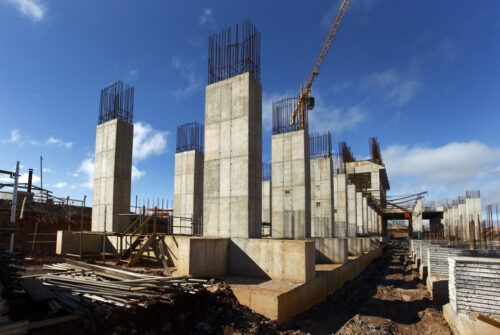CULTURAL AND SOCIETAL IMPACTS OF EARTHQUAKE RESISTANT CONSTRUCTION
Cultural and Societal Impacts of Earthquake Resistant Construction
Earthquakes have long been a significant threat to societies worldwide, often resulting in widespread destruction, loss of life, and economic setbacks. As a response to this threat, earthquake-resistant construction techniques have emerged as essential strategies to mitigate the devastating effects of seismic activities. Beyond their engineering significance, these techniques also carry profound cultural and societal impacts that extend beyond mere structural resilience.
Preservation of Cultural Heritage
One of the key cultural impacts of earthquake-resistant construction is its role in preserving historical and cultural heritage. Many regions prone to earthquakes are also rich in cultural landmarks and ancient structures. By implementing earthquake-resistant designs, societies can safeguard these valuable assets for future generations. Traditional buildings, often deeply intertwined with local culture and identity, can be retrofitted to meet modern safety standards while maintaining their architectural integrity.
Strengthening Community Resilience
Earthquake-resistant construction fosters community resilience by creating safer environments for residents. This resilience extends beyond the physical structure itself, influencing how communities prepare for and respond to disasters. The knowledge that their homes and gathering places are built to withstand seismic forces instills a sense of security among residents. This, in turn, encourages better disaster preparedness, effective evacuation plans, and community cohesion.
Reduction in Loss of Life and Displacement
One of the most critical societal impacts of earthquake-resistant construction is its potential to significantly reduce the loss of life and displacement caused by earthquakes. Buildings constructed without seismic considerations are more prone to collapse, leading to tragic consequences. By integrating engineering principles that can withstand the forces exerted by earthquakes, the risk to human life is substantially minimized. This, in turn, alleviates the burden on emergency response teams and reduces the need for large-scale displacements.
Economic Stability and Development
Earthquake-resistant construction plays a pivotal role in maintaining economic stability and promoting development. When earthquakes strike, the economic repercussions can be immense, ranging from property damage and loss of infrastructure to disrupted business activities. By investing in earthquake-resistant construction, societies can mitigate these financial setbacks. Furthermore, the availability of resilient infrastructure can attract investment, boost tourism, and contribute to overall socio-economic growth.
Advancement of Architectural and Engineering Practices
The pursuit of earthquake-resistant construction has catalyzed advancements in architectural and engineering practices. Researchers and professionals continuously innovate to develop new materials, construction techniques, and design approaches that enhance a building’s seismic performance. These advancements not only improve earthquake resilience but also influence construction practices in general, leading to safer and more sustainable buildings across various contexts.
Cultural Shift towards Safety Awareness
The integration of earthquake-resistant construction has contributed to a cultural shift towards safety awareness. Communities living in seismic zones have become more conscious of the potential risks and are more proactive in preparing for disasters. Public education campaigns, workshops, and training programs on earthquake preparedness have gained prominence, fostering a culture of safety consciousness that extends beyond construction practices.
Earthquake-resistant construction techniques transcend their engineering significance, leaving lasting cultural and societal impacts. From preserving historical landmarks to fostering community resilience, these practices contribute to safer environments, economic stability, and advancements in various fields. By recognizing the cultural and societal dimensions of earthquake-resistant construction, societies can embrace a holistic approach to disaster preparedness and sustainable development.


